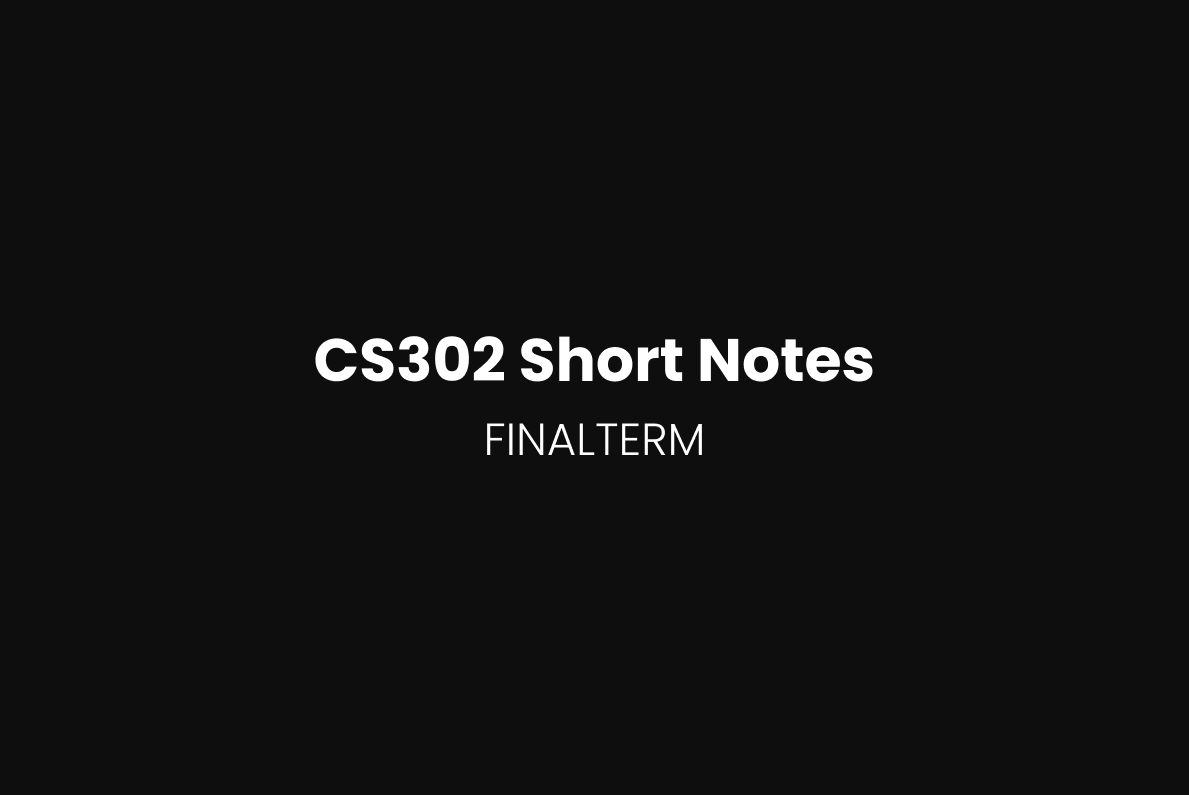
These notes on CS302 cover a comprehensive range of topics related to digital logic design (DLD) from lectures 1 to 45. They are concise, summarizing important concepts and terminologies crucial for understanding digital circuits, combinational logic, sequential circuits, and more. Here’s an overview of the key topics discussed:
Advanced Boolean Expression Language (ABEL):
Describes ABEL, a software compiler language for programmable logic devices (PLDs), commonly used to define logic circuits.Digital Circuits:
- Adder: A digital circuit that calculates the sum and carry of two or more numbers.
- Binary Code: Focuses on binary numbers, binary-coded decimal (BCD), and how digital systems represent values using binary systems (0s and 1s).
Logic Gates:
Definitions of basic logic gates such as AND, OR, NOT, NAND, NOR, and their significance in constructing digital circuits. The concept of universal gates like NAND and NOR, which can implement any logic function, is highlighted.Flip-Flops and Latches:
Various types of flip-flops like SR, JK, D, and master-slave flip-flops are explained along with their truth tables and timing diagrams. These flip-flops are the building blocks of sequential circuits and memory elements in digital systems. The difference between latches (asynchronous) and flip-flops (synchronous) is also discussed.Combinational and Sequential Logic:
Combinational logic circuits (whose outputs depend solely on the current inputs) are distinguished from sequential logic circuits (whose outputs depend on both the current inputs and past history). This includes discussions on counters, multiplexers, encoders, and decoders.Registers and Counters:
Various types of registers and counters, such as shift registers and Johnson counters, are discussed. The function and use of counters in tracking sequences of events, along with examples of up/down counters, are outlined.Memory and Storage:
- Volatile Memory: Describes memory that loses data when power is removed.
- Registers: Used for storing and shifting binary data.
- Queue: Discusses how high-speed memory stores data.
Digital Circuit Components:
- Multiplexers (MUX): Describes circuits that select one input from multiple inputs and route it to the output.
- Encoders and Decoders: Explain how encoders convert information into coded form and decoders perform the reverse process.
- Flip-Flops: The fundamental memory elements in digital circuits.
Parity and Error Detection:
Covers concepts like even and odd parity for error detection in data transmission, ensuring data integrity.Clocking and Timing Diagrams:
The importance of clock signals in synchronizing digital circuits is emphasized, along with detailed explanations of timing diagrams for flip-flops and latches.Boolean Algebra and Karnaugh Maps (K-maps):
Boolean algebra is used for designing and simplifying digital circuits, while K-maps provide a graphical method to simplify Boolean expressions and minimize logic functions.Digital System Design:
Explains how digital systems represent and manipulate information in binary form. It touches upon analog vs. digital systems and why digital systems are preferred due to their resistance to noise and high precision.
In summary, these notes provide a focused and structured guide to the foundational principles of digital logic design. They cover essential topics, from basic digital components to advanced logic circuits, and are valuable for students revising for exams in the field of digital systems and circuit design.


Leave a Reply